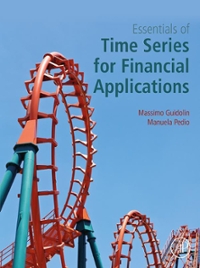Answered step by step
Verified Expert Solution
Question
1 Approved Answer
Question 3 (30 points) Suppose an economy where 2,000 young agents are born in every period t. Each young individ- ual is endowed with

Question 3 (30 points) Suppose an economy where 2,000 young agents are born in every period t. Each young individ- ual is endowed with 80 units of the consumption good. The young do not hold any fiat money; instead, they hold deposits to finance consumption later in life. In fact, each young individual deposits 50 units of the consumption good with banks. They do not invest in capital. Deposits at banks are subject to a reserve requirement of 15 percent. After meeting the re- serve requirement, banks invest the remainder of all deposits into capital. The net real rate of return on capital is 3 percent per period. The monetary base controlled by the Central Bank is constant and equal to 5,000 units of fiat money. There is no central bank lending. (a) (5 points) Find the equation describing the money market clearing, that is, the equality of total supply and demand for fiat money. Use it to calculate the exact price level in units of fiat money. (b) (5 points) Calculate the total nominal money stock (All)t. How large is the money multiplier? (c) (5 points) How large is total output (GDPt) in this economy, assuming that capital needs two periods to produce output and then fully disintegrates? (Hint: There is no uninter- mediated capital in this economy.) Now assume that the Central Bank allows private banks to obtain 25% of the reserve require- ment through Central Bank lending. The Central Bank charges an net real interest rate of 2% on those loans. (d) (5 points) Set up the money market equilibrium taking into account Central Bank lend- ing. Derive the new price level. How have prices changed now that Central Bank lending is available? (e) (5 points) Calculate the gross real rate of return on deposits that competitive banks will offer. (f) (5 points) What would happen to the value of fiat money if Central Bank lending was unlimited but all rates of return remained unchanged (including the interest rate that the central bank charges, = 1.02)?
Step by Step Solution
There are 3 Steps involved in it
Step: 1

Get Instant Access to Expert-Tailored Solutions
See step-by-step solutions with expert insights and AI powered tools for academic success
Step: 2

Step: 3

Ace Your Homework with AI
Get the answers you need in no time with our AI-driven, step-by-step assistance
Get Started


